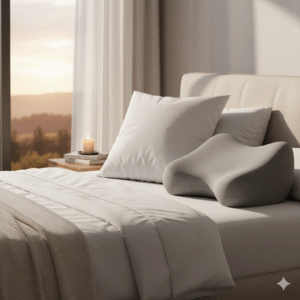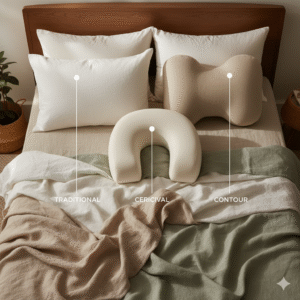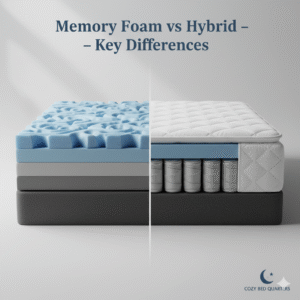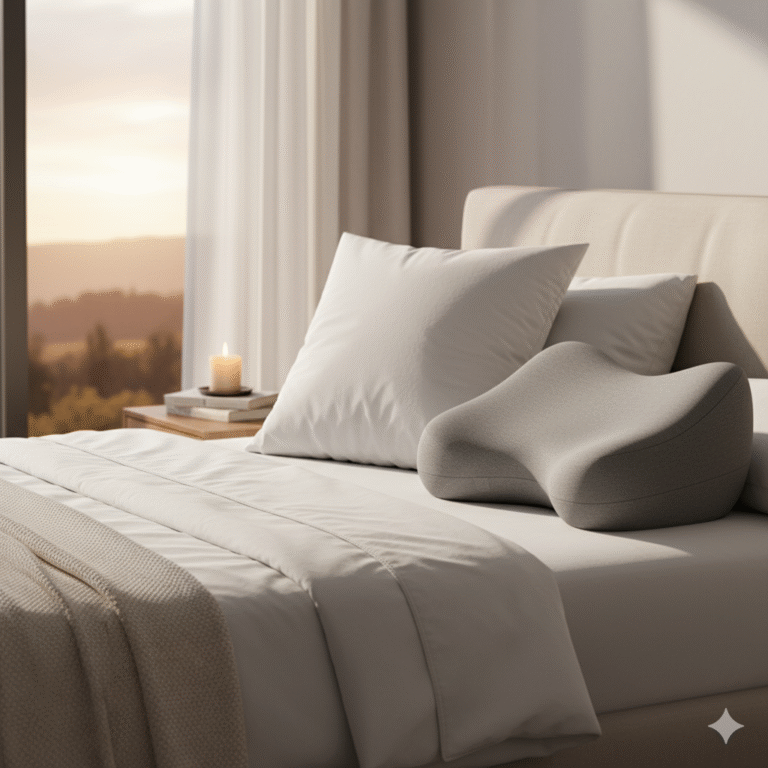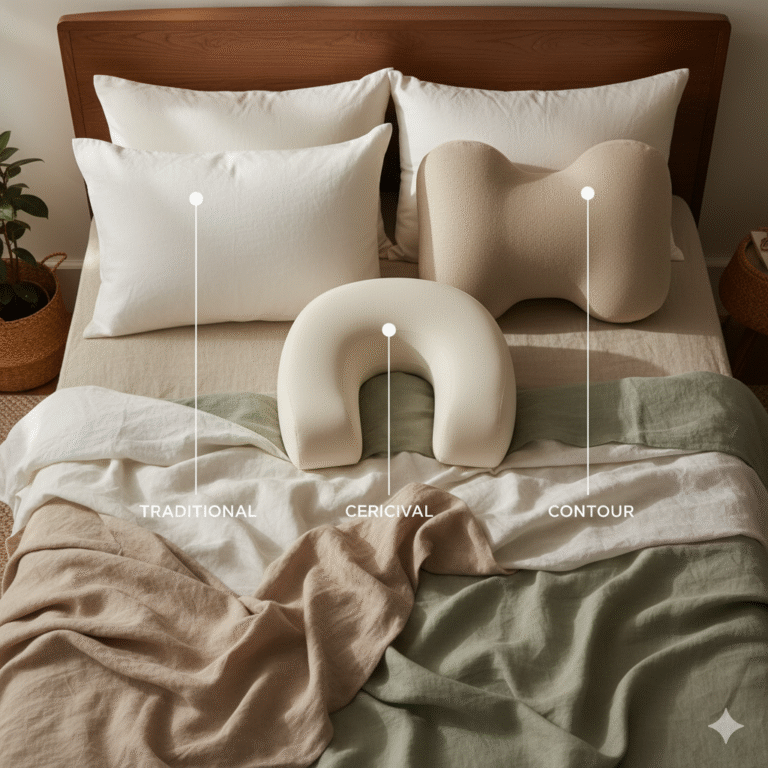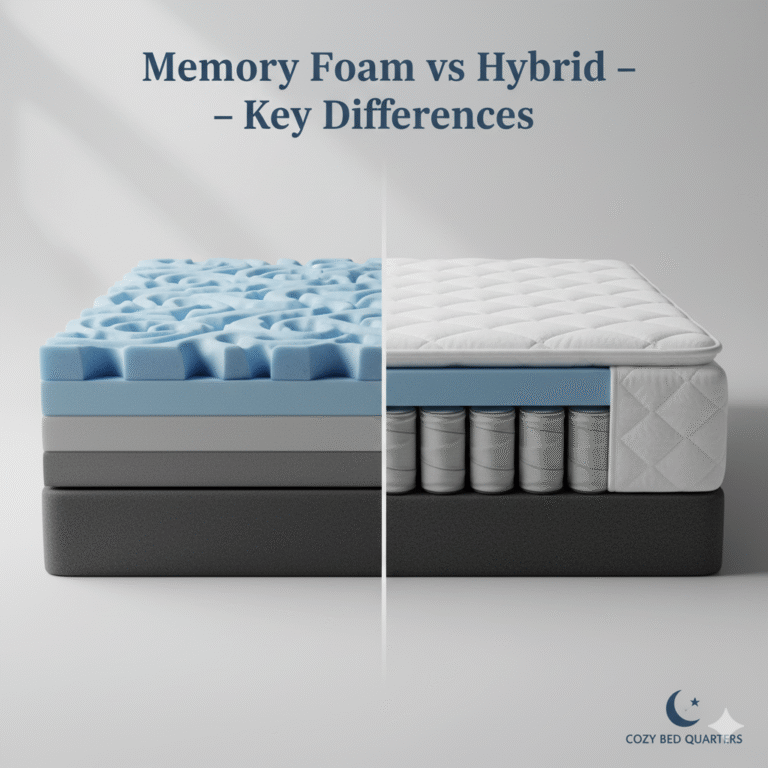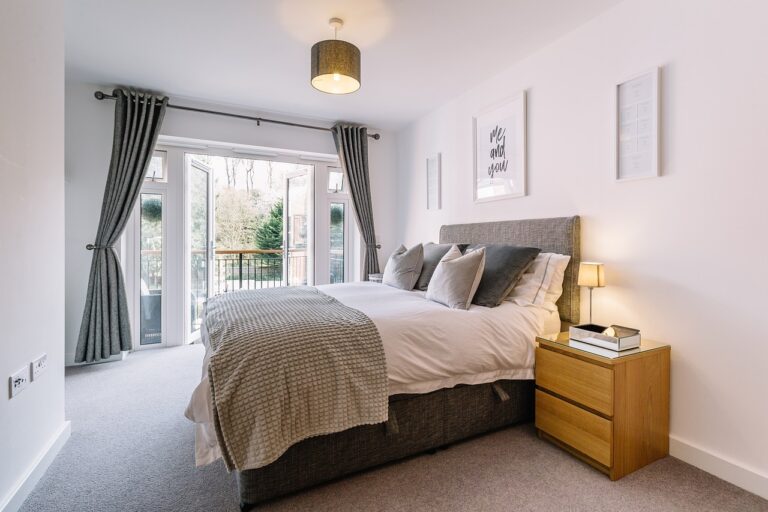Sleep Sanctuary Ideas: 21 Proven Tips for Deeper Rest
Sleep Sanctuary Ideas that work: simplify your space, choose breathable bedding, set gentle lighting, and add soothing scents and sounds. Follow these friendly, science‑aware tips to turn your bedroom into a calm, restorative retreat tonight.
Updated: August 24, 2025
Key Takeaways
- Build your sleep sanctuary around breathable, eco‑friendly bedding and soft, low‑glare light.
- Create calm with aromatherapy, steady soundscapes, and simple nightly rituals.
- Choose durable, non‑toxic, sustainably made furniture and finishes.
- Sleep Sanctuary Ideas shine when clutter is low and air is fresh—plants and smart tech can help.
A sleep sanctuary is a dedicated space that promotes deep rest and tranquility. Unlike a standard bedroom, it blends calming aesthetics, sustainable materials, and sensory cues that support healthy sleep. Designed thoughtfully, it becomes a personal retreat to recharge and reduce stress before tomorrow.

What Is a Sleep Sanctuary and Why It Matters
A sleep sanctuary sets the stage for consistent, high‑quality rest. A calmer room supports memory, mood, and overall wellness—and helps you fall asleep faster.
- Quick context: good sleep routines are linked with better daytime focus and emotional balance. See our guide on sleep quality and memory.
- Try this: dim lights an hour before bed, silence notifications, and journal for three minutes to cue your wind‑down.

Bedding & Layering Essentials
Breathable fabrics keep your body at a steady temperature so you sleep deeper. Layering adds comfort and makes seasonal tweaks easy.
- Materials that breathe: organic cotton, Tencel, and linen are soft, moisture‑managing picks. Look for GOTS or OEKO‑TEX labels.
- Layers that flex: combine a light duvet, two pillow types (one soft, one medium), and a throw you can add or remove.
- Example: pair linen sheets with a medium‑weight duvet in spring; add a wool blanket when temperatures drop.
- Explore calming wind‑downs that pair well with fresh sheets in our sleep meditation guide.

Colors, Lighting & Calming Scents
Soft greens, muted blues, and gentle lavender tones relax the nervous system. Warm, dimmable light signals that it’s time to unwind.
- Color tip: keep bold hues for accents; paint walls in soft, low‑saturation shades for a quieter feel.
- Light tip: use warm bulbs and bedside lamps; try circadian‑friendly smart bulbs for evening wind‑downs.
- Scents that soothe: lavender, chamomile, or sandalwood via a diffuser or linen spray as part of your nightly ritual.
- Example: switch your lamps to warm 2700K LEDs and add three deep breaths with a lavender mist before bed.

Sustainable Furniture & Non‑Toxic Choices
Timeless, well‑made pieces reduce waste and chemicals that can affect indoor air quality. Choose finishes that keep your sleep sanctuary fresh.
- Look for: FSC‑certified wood, reclaimed materials, low‑ or zero‑VOC paints, and natural fiber textiles.
- Example: a solid wood bed frame with a water‑based finish and a simple nightstand that hides cords for visual calm.
- Bonus: shop brands with transparent sourcing—see sustainable bedding picks to align values with comfort.

Soundscapes, Rituals & Clutter Control
Gentle, consistent sound masks disruptions; tiny rituals train your brain for sleep; a tidy room lowers mental load.
- Sound: white noise or rain tracks create a steady backdrop that reduces wake‑ups.
- Rituals: five minutes of stretching or a short meditation helps your body shift gears—start with our guided relaxation.
- Clutter: use simple bins and a “clear surfaces” rule so bedtime feels open and breathable.
- Example: set a 10‑minute “reset” timer after dinner to put the room in order before your wind‑down.

Green Upgrades & Smart Tech
Plants can freshen the vibe while smart tools fine‑tune comfort. Use technology lightly so it supports, not distracts, your sleep sanctuary.
- Plants: snake plant, aloe vera, or peace lily add life and can improve perceived air freshness.
- Smart picks: dimmable bulbs, simple automations, and—if you like data—a smart mattress that adjusts firmness or temperature.
- Example: schedule lights to fade over 20 minutes while a gentle ocean track starts at low volume.

FAQ
What are the key elements of a sleep sanctuary?
Breathable bedding, calming colors, soft lighting, soothing scents, plants, and a clutter‑free layout.
How can I make my bedroom eco‑friendly?
Choose organic textiles, certified wood furniture, low‑VOC finishes, and durable pieces you’ll keep for years.
What colors are best for relaxation?
Soft greens, muted blues, and gentle lavenders tend to quiet the nervous system and feel restful.
Can scents really improve sleep?
Yes. Lavender, chamomile, and sandalwood are popular because their aromas support a calm, wind‑down routine.
Which nightly rituals actually help?
Brief journaling, light stretching, and a short meditation work well—consistency matters more than length.
Final Thoughts
Designing a sleep sanctuary is a kind, sustainable gift to yourself. Start small, keep what works, and let your room evolve into the calm space you crave. For more inspiration, explore our Cozy Bed Quarters guides.
Related Reading
- Sleep Quality and Memory Retention
- Sleep Disorders and Their Effects
- Sleep Meditation & Guided Relaxation
- Best Sustainable Bedding Brands
- Best Smart Mattresses
- EPA: Protecting Your Home from Bed Bugs


